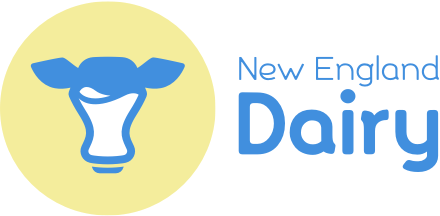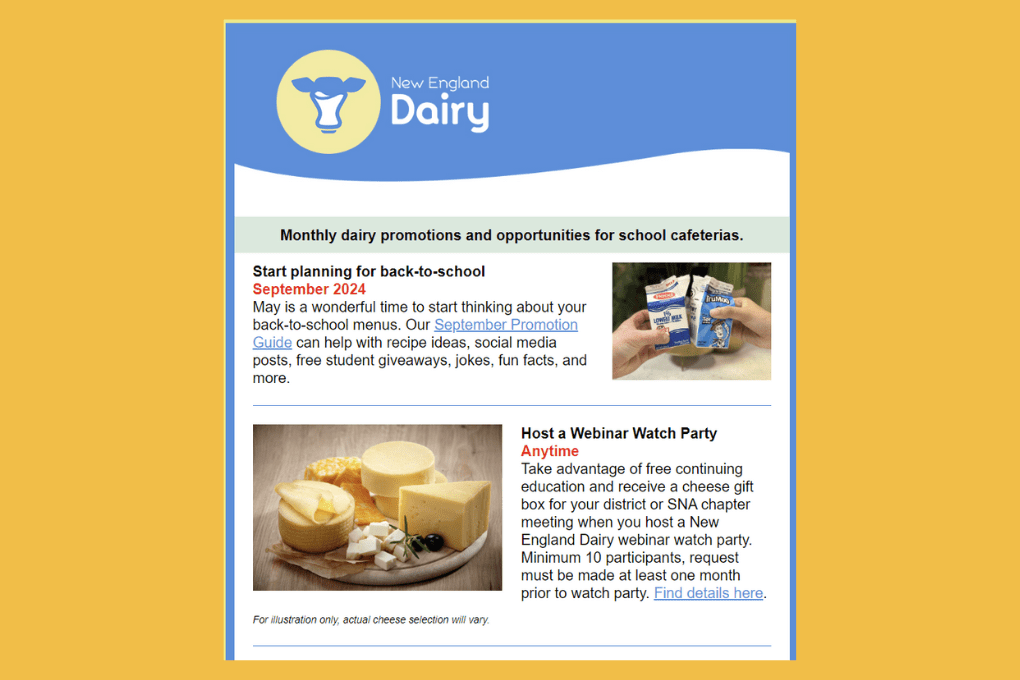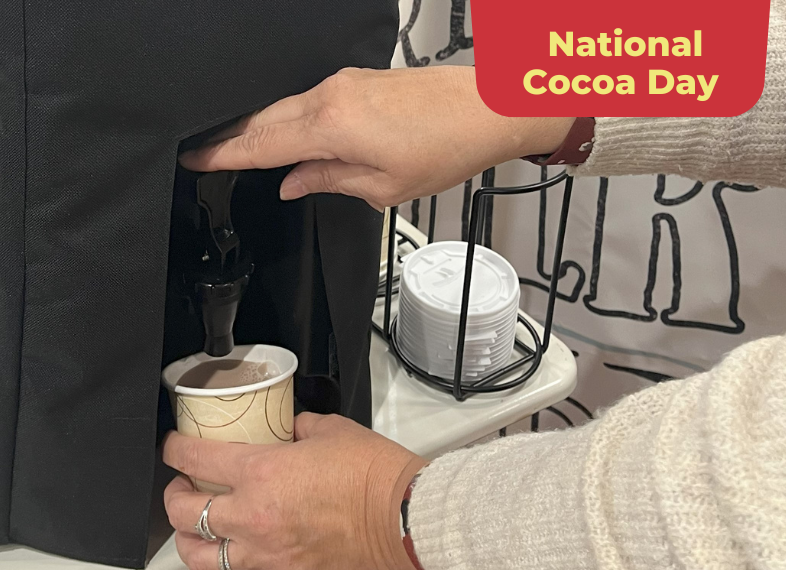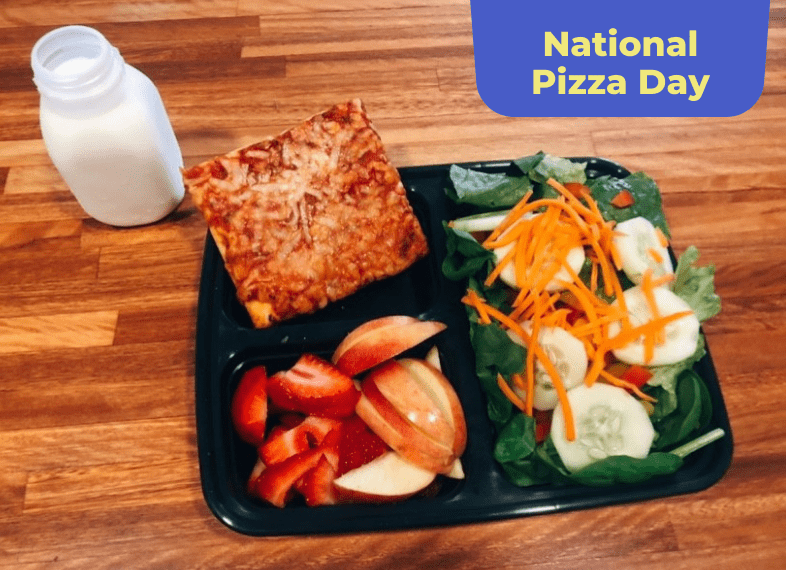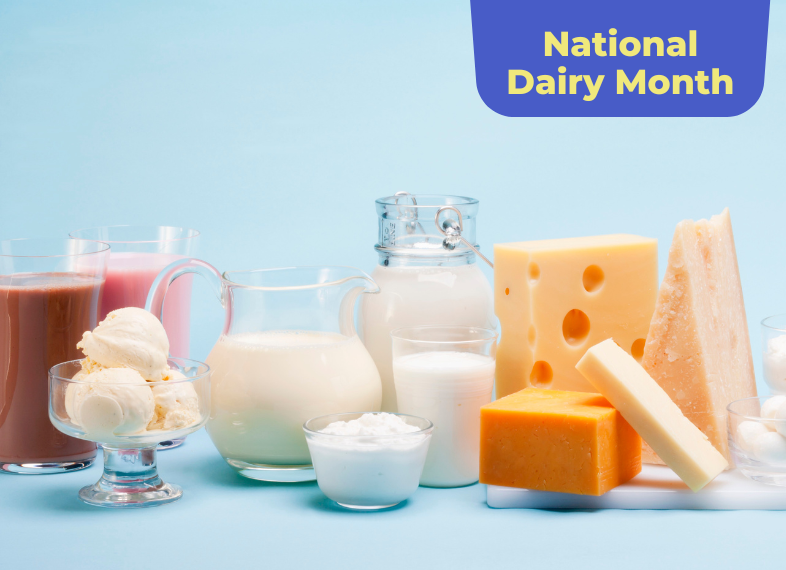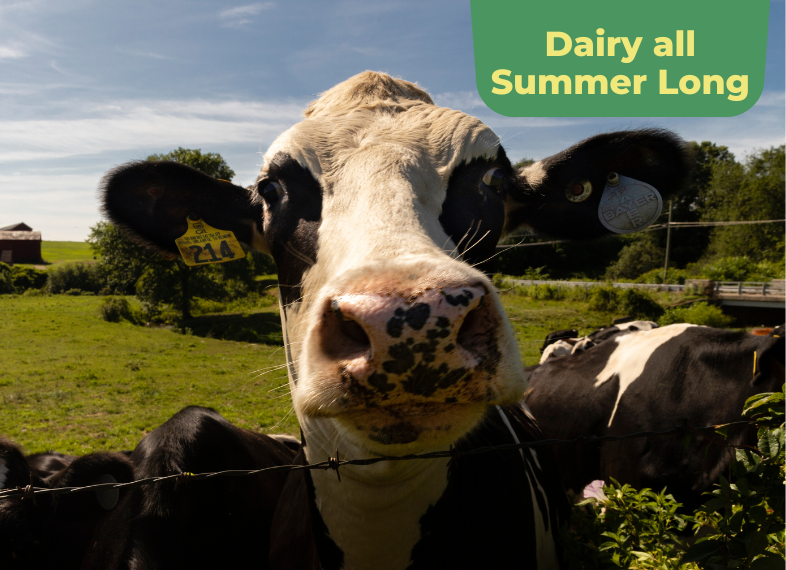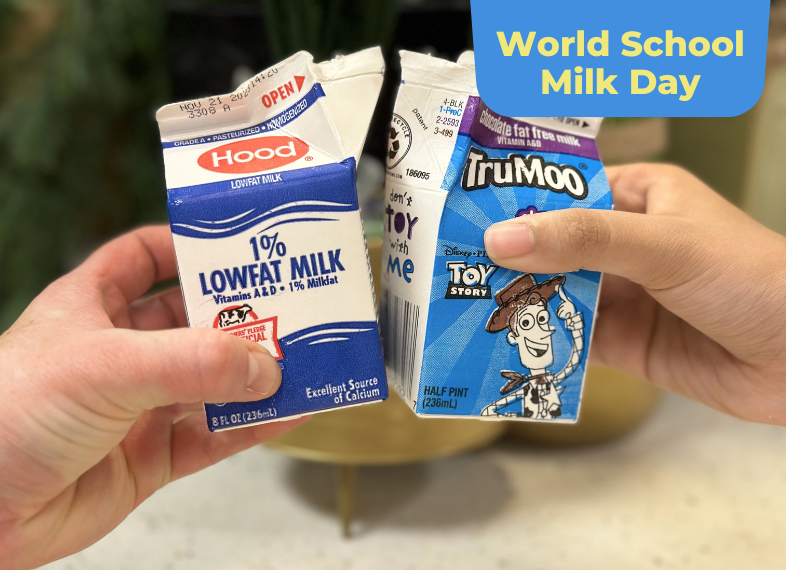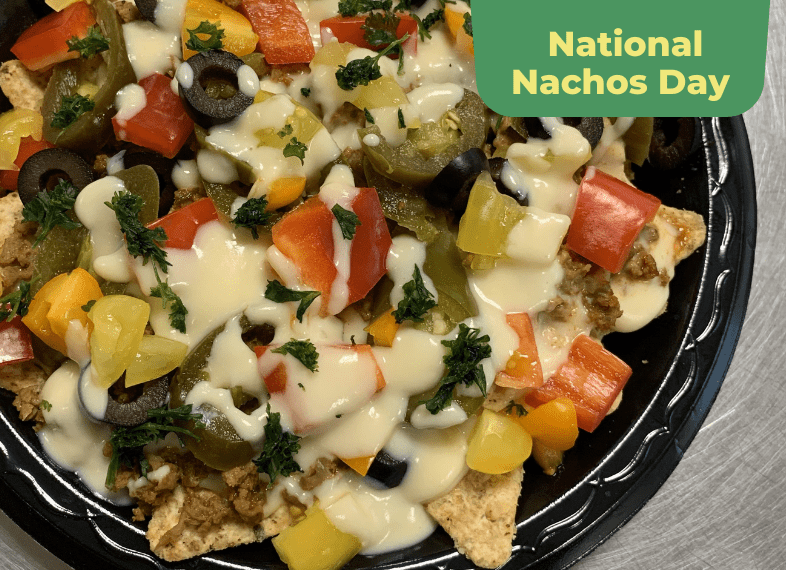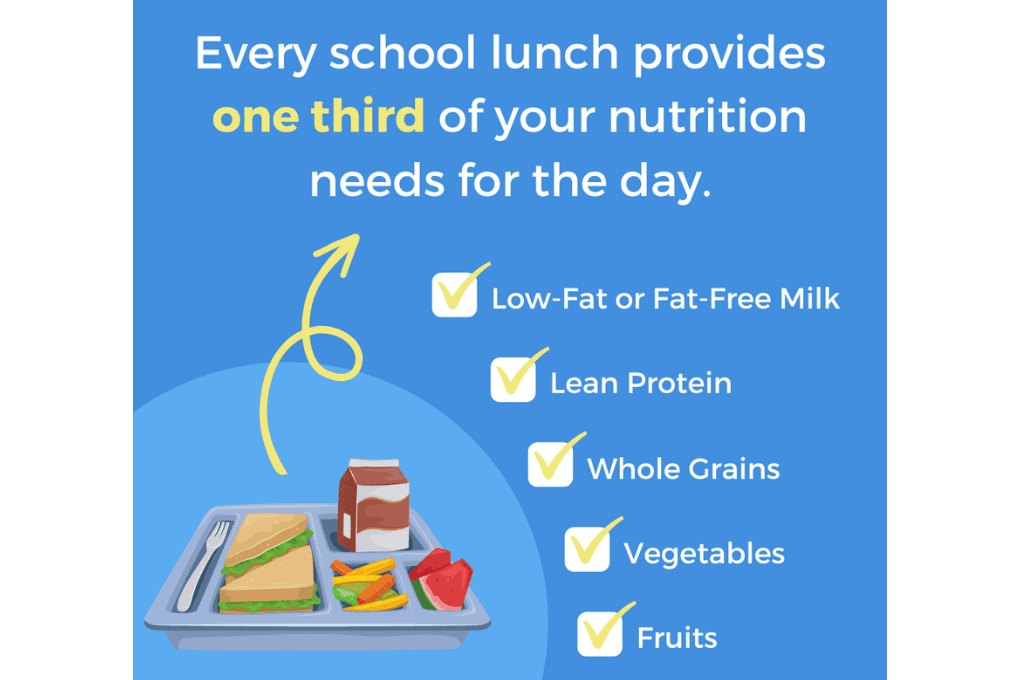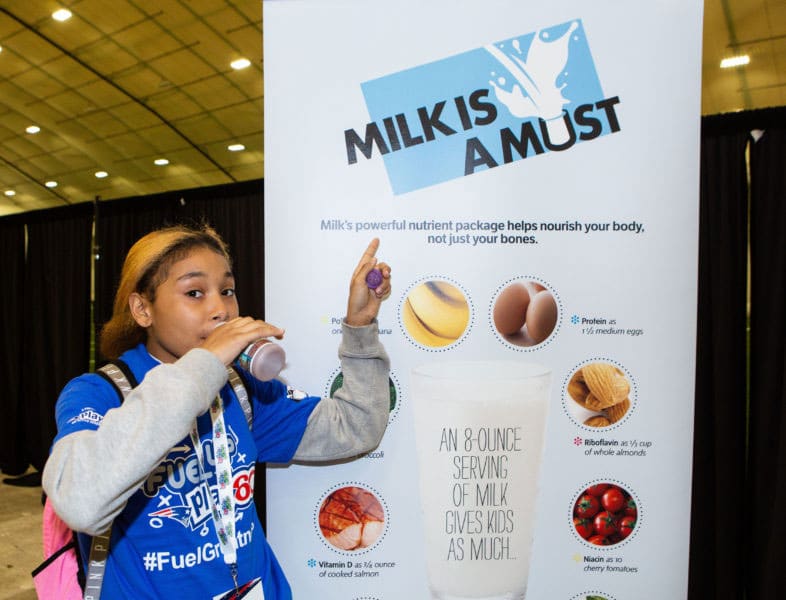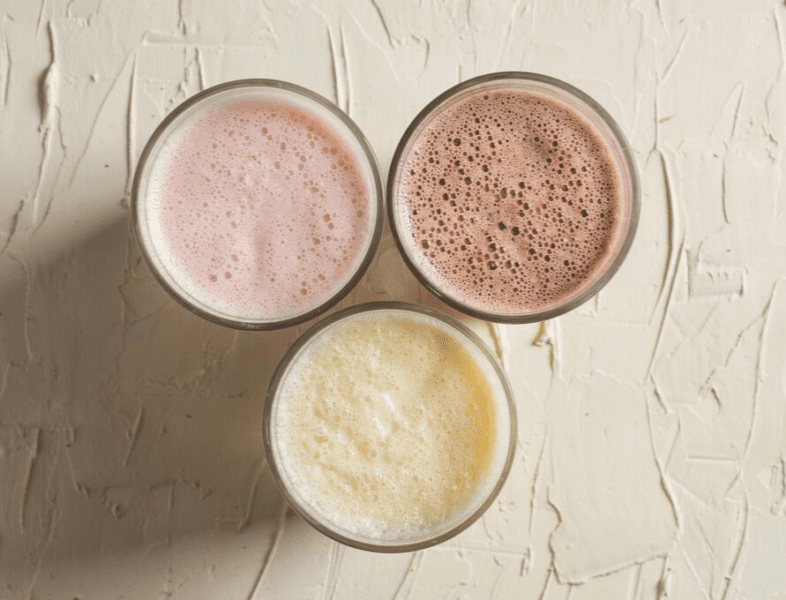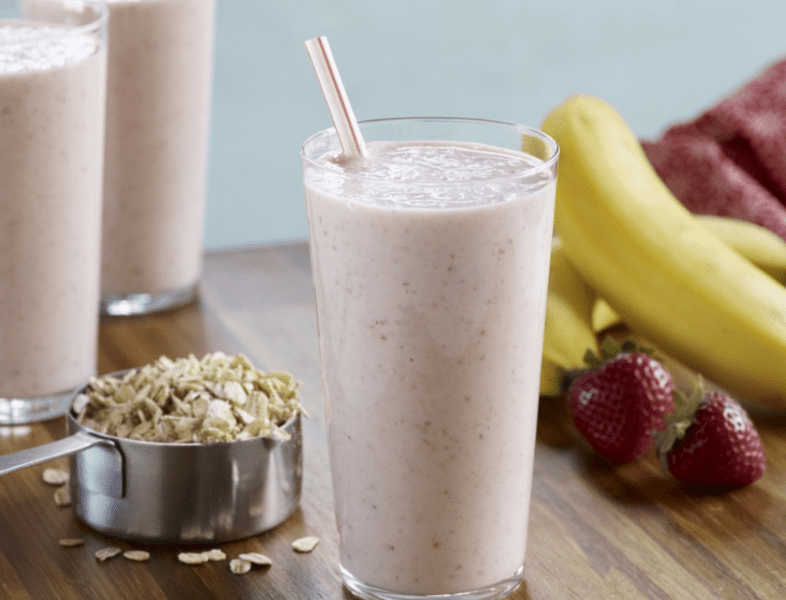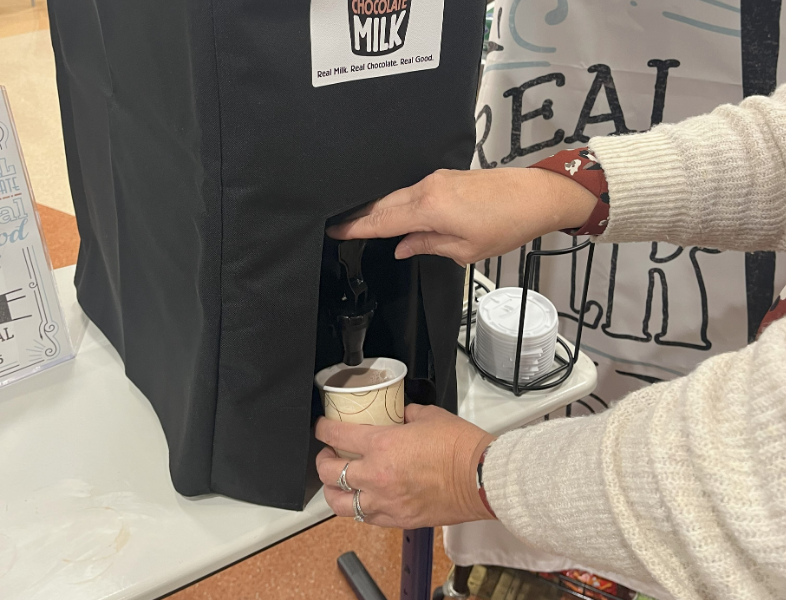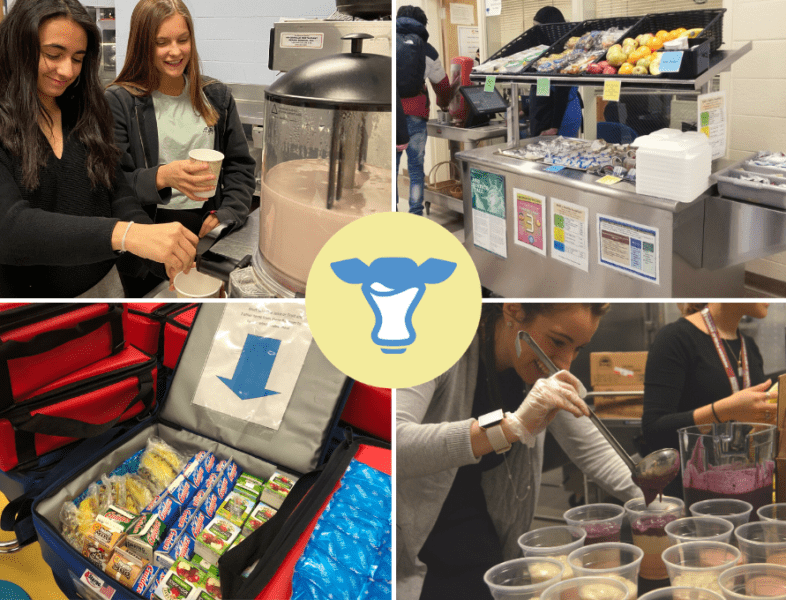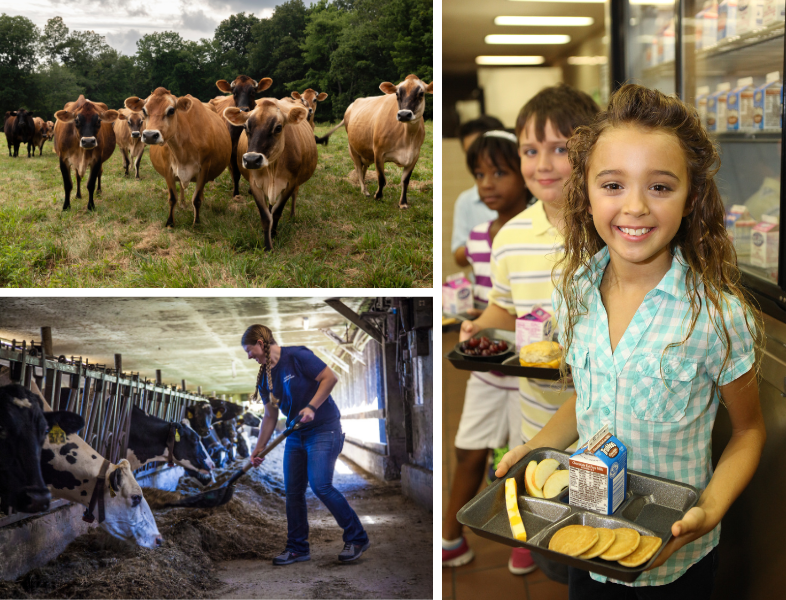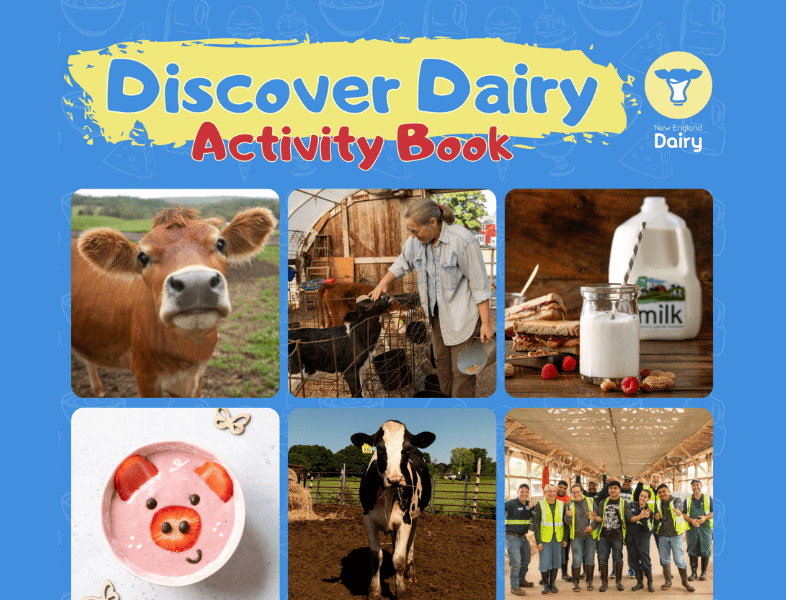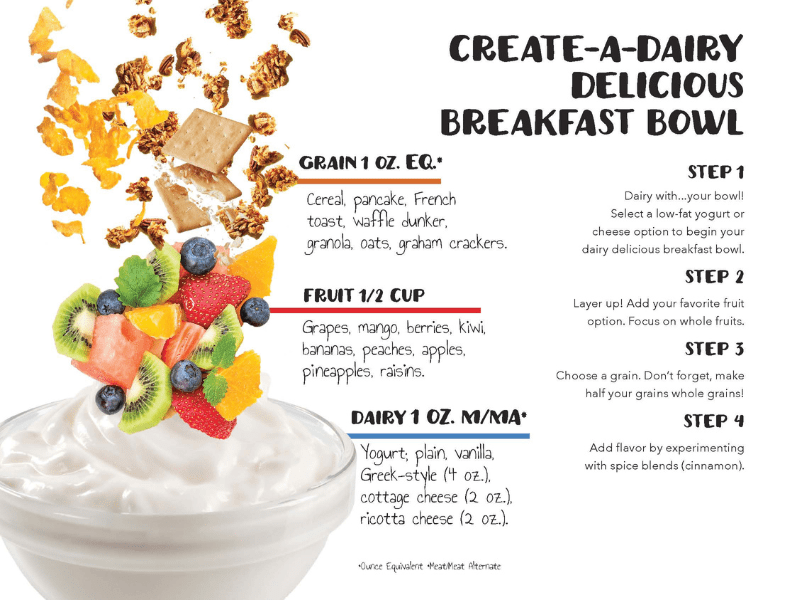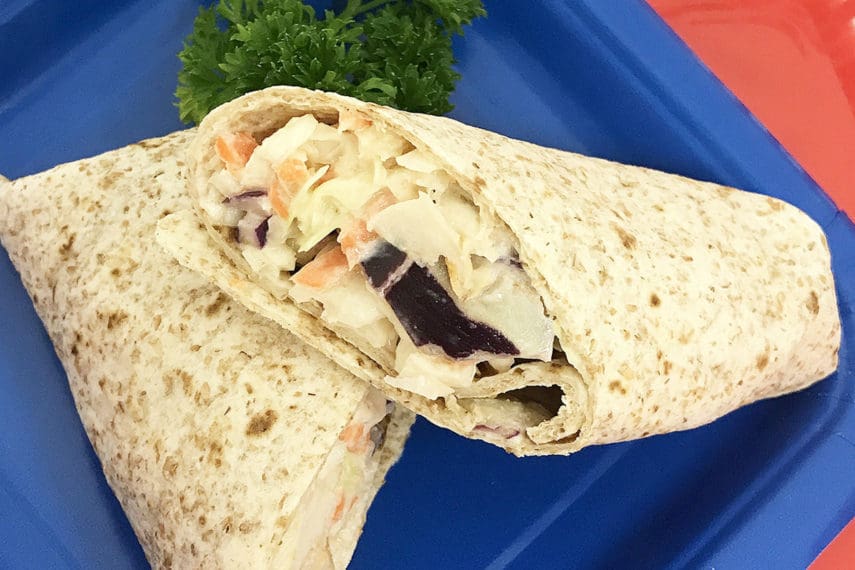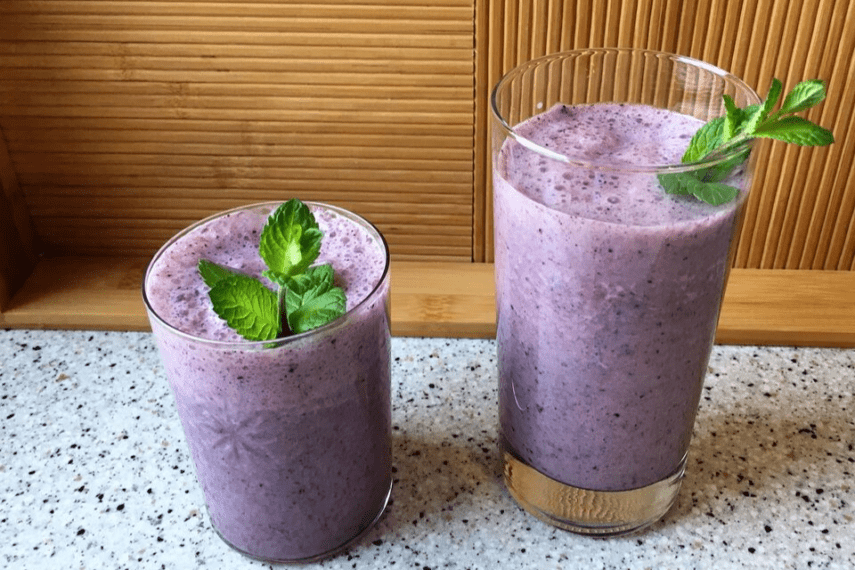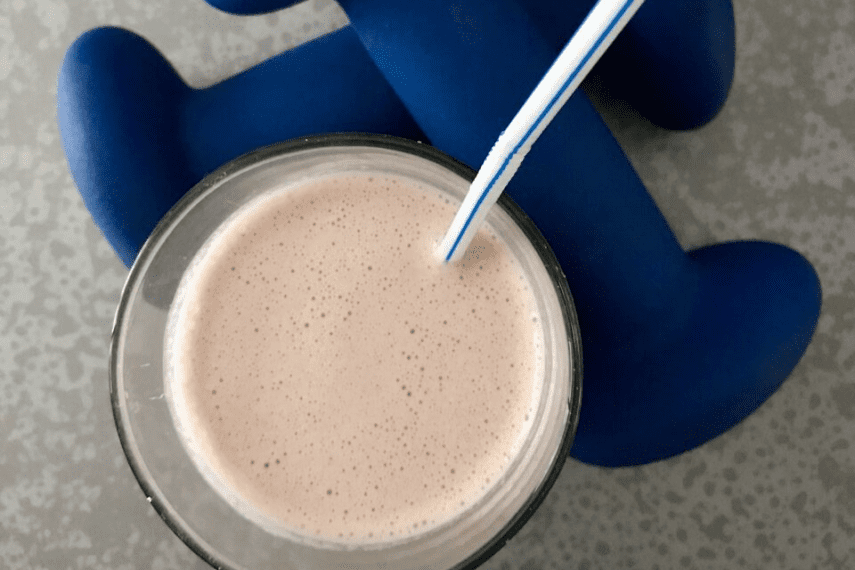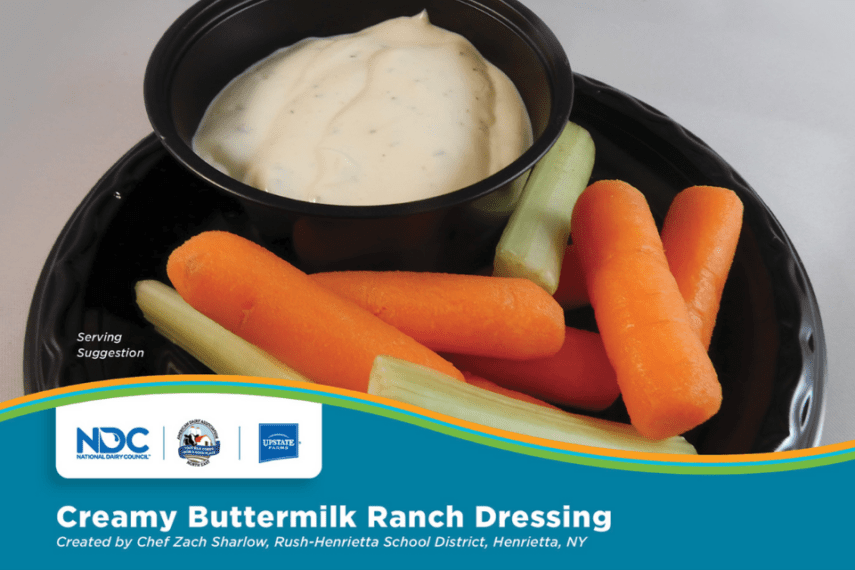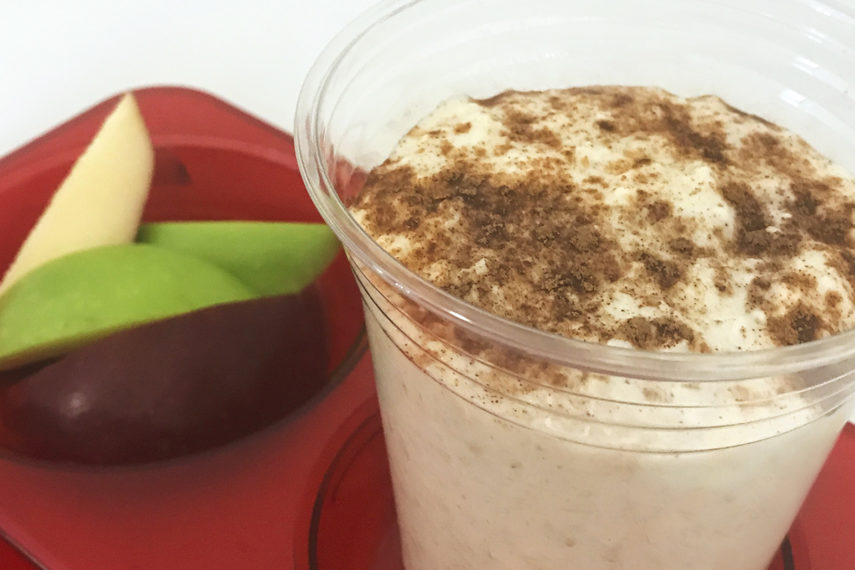Dairy in Schools FAQ
Milk is required as a part of the National School Lunch and Breakfast programs because it provides a powerful package of 13 essential nutrients that are good for overall wellness. Schools can choose to offer white and flavored, fat-free and 1% milk, as well as lactose-free milk. Low-fat and fat-free yogurt and cheese can also be part of school meals.
Many schools have been successful in integrating smoothies as part of their reimbursable meal menus. Depending on the recipes used, you can credit smoothies as milk, yogurt, fruit, and vegetable. Learn how to credit properly by following the USDA’s Smoothie guidance and using our smoothie recipes and resources.
New England dairy farmers play an important role in producing a wholesome, nutritious product that is locally produced year-round and goes from the farm to you in as little as two days. Like other crops, it’s important to bring milk and other dairy products into school cafeterias and classrooms to nourish healthy bodies as well as connect students to where their milk comes from and how it impacts their bodies, the environment, and their communities at large.
